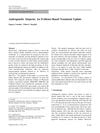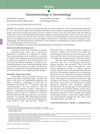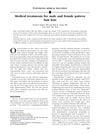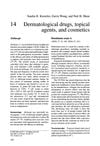is 1% finasteride and 0.1% tretinoin typically prescribed? Finasteride/Dutasteride 5/22/2025
1% finasteride is considered too high, with most people using 0.1% or 0.3% topically. Combining it with 0.1% tretinoin is aggressive and may cause skin irritation.
View this post in the Community →
Similar Community Posts Join
6 / 1000+ resultscommunity Topical is superior to oral in terms of results (my theory)
The conversation discusses the use of topical minoxidil and finasteride for hair loss, with some users combining them with oral treatments. Users share their experiences and opinions on effectiveness, cost, and convenience, with mixed views on whether topical or oral applications are superior.
community What else is good. Besides the big 3.
Key treatments for hair preservation include minoxidil, finasteride/dutasteride, and microneedling, with additional options like specific shampoos, oils, biotin, zinc, tretinoin, clascoterone, and low-level laser therapy. Maintaining a healthy lifestyle, reducing stress, and addressing nutrient deficiencies can also support hair health.
community 2.5 Years Fin/Min - progress pics
The user achieved significant hair regrowth using topical Minoxidil and Finasteride over 2.5 years, with results plateauing after a year. They experienced minimal side effects and used microneedling to enhance results.

community 2025 Official beginner guide for “I’m losing my hair, what can I do?”
For hair loss, start with Finasteride, Minoxidil, Ketoconazole shampoo, and Microneedling. For severe cases, consider Dutasteride, oral Minoxidil, or hair transplants.
community MinoxidilMax just launched a 0.3% tretinoin topical. Would you try?
The conversation discusses a new 0.3% tretinoin topical launched by MinoxidilMax for mixing with other solutions, with some users expressing concern about potential skin irritation compared to lower concentrations. MinoxidilMax has also released other products like topical Dutasteride and RU58841.
community Minoxidil works only with Retinoic acid
Minoxidil is more effective when combined with retinoic acid, such as tretinoin or tazarotene, enhancing hair growth. Some users experience significant regrowth, while others see minimal effects or side effects.
Related Research
6 / 1000+ results
research Androgenetic Alopecia: An Evidence-Based Treatment Update
Effective treatments for male pattern baldness include oral finasteride and topical minoxidil, while topical minoxidil is best for female pattern baldness.

research Nanotechnology in Dermatology
Nanotechnology in dermatology shows promise for better drug delivery and treatment effectiveness but requires more safety research.

research Topical Treatment for Scarring and Non-Scarring Alopecia: An Overview of the Current Evidence
Minoxidil and finasteride are the best for non-scarring hair loss; more research is needed for scarring hair loss treatments.

research Medical Treatments for Male and Female Pattern Hair Loss
Minoxidil and finasteride treat hair loss in men, while minoxidil treats hair loss in women.

research Therapies
The document concludes that low-dose acne treatment is most suitable for moderate acne, with high patient satisfaction and low relapse rates.

research Dermatological Drugs, Topical Agents, And Cosmetics
The document concluded that various dermatological treatments have different effectiveness and side effects, with some causing irritation, allergic reactions, or systemic effects.